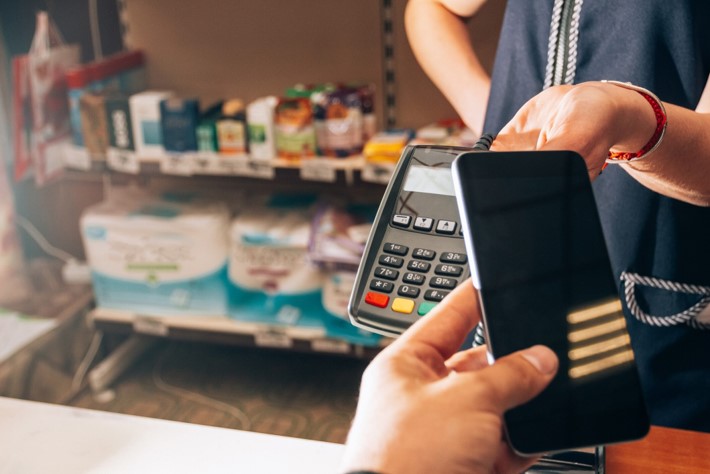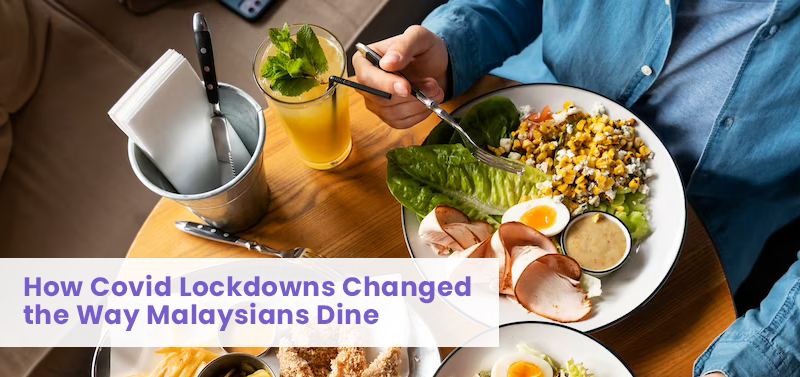How Covid-19 Lockdowns Changed the Way Malaysians Dine?
The dining landscape in Malaysia has undergone a major shift due to the Covid-19 pandemic. With lockdowns and social distancing measures in place, Malaysians have had to adapt their dining habits. While Malaysians are known for their love of diverse dining options, from street food to high-end restaurants, the pandemic has forced many to explore new ways of enjoying their favourite foods, such as takeout and delivery services. Despite the challenges, Malaysians remain passionate about their food culture and are finding innovative ways to continue enjoying their favourite dishes.
The pandemic lockdowns have certainly affected the purchasing and consumption habits of Malaysians, but other factors have also played a role. The cost of living has been on the rise, and the growth of e-commerce has made it easier for Malaysians to shop from home. Additionally, more and more Malaysians have been working remotely, which has changed the way they think about food and where they get it from. All of these factors have contributed to a shift in the Malaysian food landscape.
Our Consumer Pulse Survey 2023 gathered data from a diverse sample of 2285 individuals in Malaysia, including East Malaysia and aimed to explore the effects of these changes on the dining preferences and habits of Malaysians, and how these dining habits have changed since the Covid-19 pandemic ended.
Where Do Malaysians Prefer to Eat Breakfast?
Our survey found that most Malaysians prefer to have a homemade breakfast in the comfort of their own homes. This trend is particularly prevalent among individuals who work remotely and those who are 45 years old and above. Conversely, students and individuals who live alone are less likely to opt for breakfast at home, with many preferring to skip breakfast altogether.
When it comes to eating breakfast outside, for many Malaysians, breakfast is a meal best enjoyed at local eateries like kopitiam, food courts, and mamak stalls. These popular spots are popular for both dine-in and takeout options, making them a convenient choice for those with busy schedules. Interestingly, those who work in hybrid roles and have a household income of RM3,000 to RM5,000 are the most likely to frequent these breakfast spots. Whether it's a quick bite before work or a leisurely weekend brunch, these eateries have become a staple in Malaysian breakfast culture.
According to our survey, Malaysians tend to skip online food delivery for breakfast, likely due to the rush of getting ready for work in the morning. However, the survey also found that those aged 18-24 and working in hybrid roles are more likely to use online delivery services for breakfast, possibly because of their more flexible schedules.
Where Do Malaysians Prefer to Eat Lunch?
When it comes to lunch, Malaysians tend to prefer eating out rather than preparing their own meals at home. In fact, just under half of Malaysians opt for home-cooked lunches, with remote workers and Malays being more likely to do so. For the majority, lunchtime is an opportunity to explore the many delicious food options available outside of the home.
For lunchtime options, ready-to-eat meals are not the most popular choice, especially among those who work in uniforms professions. Online food delivery and fast-food takeout are equally popular options. Interestingly, younger and less skilled blue-collar workers also tend to favour these options.
As with breakfast, Malaysians have a wide variety of options to choose from. Many people opt to dine out at restaurants or cafes, while others prefer to grab a quick takeaway meal from kopitiams, food courts, or mamaks. These options are especially popular among Malaysians with a median household income of RM15,000 per month.
Where Do Malaysians Prefer to Eat Dinner?
According to our survey, the majority of Malaysians, a whopping 72%, prefer to have dinner at home with home-prepared meals. Interestingly, this trend is more common among those with lower incomes, while those earning between RM5000 to RM15,000 are less likely to opt for home-cooked dinners.
When it comes to online food delivery, dinner time is the most popular time for orders. This is especially true for households with more than 5 people, as the delivery fee becomes less significant compared to the overall cost of the meal. Additionally, younger adults who are more comfortable with technology tend to use online food delivery services more frequently.
Malaysians working in white-collar professions are the most likely to dine out for their evening meals, often opting for restaurants or takeout from kopitiams, food stalls, and mamak restaurants.
Conclusion
To sum up, the findings of our Consumer Pulse Survey reveal that Malaysians continue to favour home-cooked meals for all three main meals of the day. Furthermore, the rise in remote and hybrid work arrangements may play a role in the growing popularity of home-prepared meals.
The increasing adoption of online food ordering options among Malaysians indicates a growing preference for convenient and tech-savvy dining experiences. However, due to the wide availability of outside food options at varying price ranges, it may take some time for online ordering services to gain a larger market share in Malaysia.
Additionally, the social aspect of dining out plays a significant role, particularly among Malaysians, including those in white-collar professions. Many individuals value their evenings as an opportunity to spend quality time with friends and loved ones. Dining out offers a chance to catch up and connect before the day comes to an end. This social aspect adds to the appeal of traditional dining experiences and can influence the choice of eating out over online food ordering.
It is essential for online food ordering services to consider these factors and strike a balance between convenience, affordability, and providing a social experience to attract more Malaysians to their platforms. As consumer preferences continue to evolve, the market for online food ordering services in Malaysia has the potential for growth by catering to these various aspects of dining preferences.
More Article


Where do Malaysians shop for their skincare?

Malaysia Property Market Outlook (Q4 – 2019)


